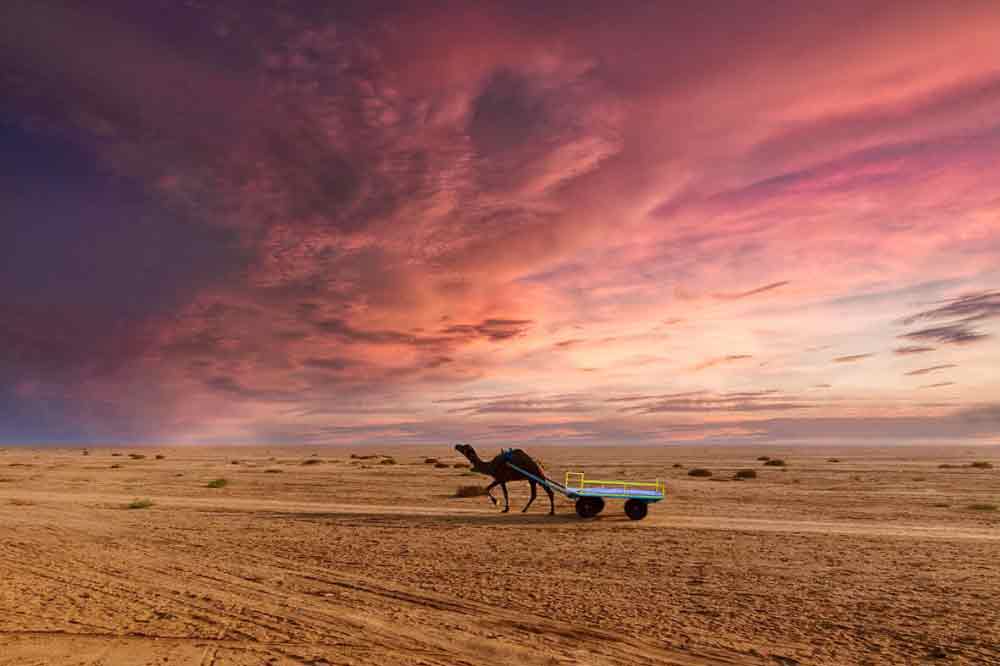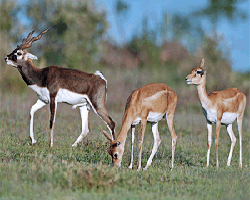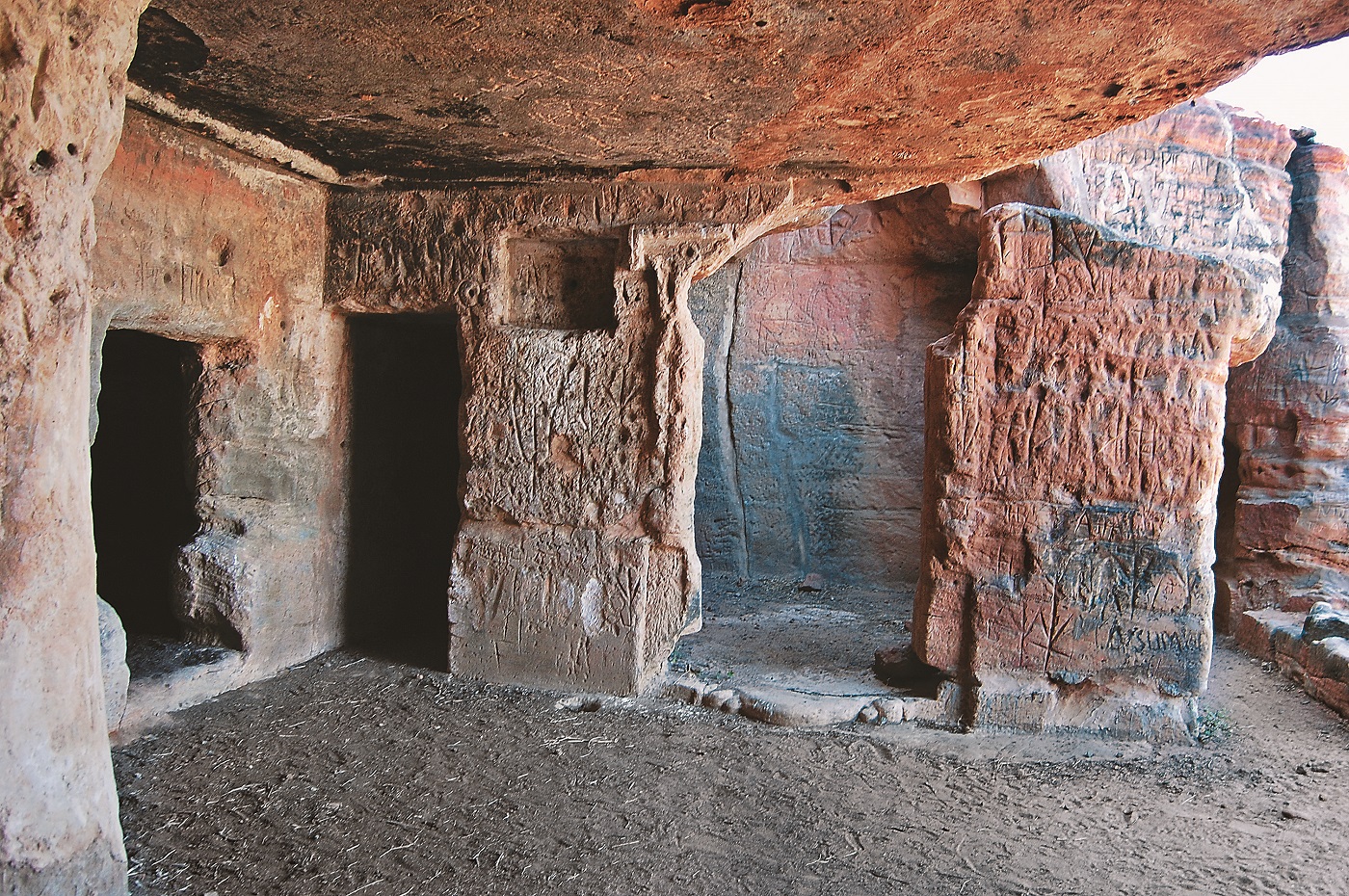
History of Kutch

History of Kutch
Rainy season to the end of winters is the best time to enjoy this wondrous sanctuary. The most ideal way to enjoy this retreat is, taking a walk around the natures cradle while befriending various species of the Bustard family. Look around for the Black and Gray Francolin, the Spotted and Indian Sangrouse, Quails, Larks, Shrikes, Coursers and Plovers. And if you are lucky, you might catch fluttering glimpses of rare species of Stolicska’s Bushchat and White-naped Tit. If you keep walking northwards towards the coastal area of Jakhau during winters, you might get greeted by large flocks of flamingos, Herons, Egrets, Sandpipers and other birds dwelling in the salt-reservoirs and the creek.
A climb up the watchtower and vigilance will surprise you with flocks of Indian Gazelle and wolfs spotting the entire landscape, while a drive around the sanctuary will acquaint you to the friendly nilgais.

Narayan Sarovar
In a land replete with pilgrimage sites, Narayan Sarovar is a different kind of holy experience. At almost the westernmost point of land in India, it can only be reached by traveling over 100 km from Bhuj across the barren scrubland of Kutch. A journey after which the appearance of a vast lake will surprise you even though you have come to see it and its spiritual significance will be tangible. Narayan Sarovar Lake is one of the 5 holy lakes of Hinduism, along with Mansarovar in Tibet, Pampa in Karnataka, Bhuvaneshwar in Orissa and Pushkar in Rajasthan. The lake is associated with a time of drought in the Puranic area, when Narayan (a form of Lord Vishnu) appeared in response to the fervent prayers of sages and touched the land with his toe, creating the lake, now revered as holy to bathe in (though this is not recommended).
There are temples to Shri Trikamraiji, Laxminarayan, Govardhannathji, Dwarkanath, Adinarayan, Ranchodraiji and Laxmiji, built by the wife of Maharao Desalji. These are of more interest to those on religious pilgrimage here; other visitors are likely to find Koteshwar a more interesting option.

Koteshwar Temple
After traveling over the expanse of desert in western Kutch, you find the Koteshwar Temple, at a place where the immensity of dry land meets the incomprehensible vastness of the sea. After so much arid ground, the sight of the ocean will awaken your spirits; though the sea is even less hospitable to humans, a sobering thought. The only point that breaks the skyline from the flat brown horizon to the east and the wide blue horizon to the west is the point of the Koteshwar Temple, the last outpost of human construction at the westernmost limit of India. Not overrun by tourists like the temple at Dwarka, Koteshwar is conducive to contemplating emptiness, pondering the place of humanity on earth (and ultimately, isn’t that what spiritual traditions are about ). The story of Koteshwar begins with Ravana, who won a boon from Lord Shiva for an outstanding display of piety. This boon was the gift of a Shiva linga of great spiritual power, but which Ravana, in his arrogant haste, accidentally dropped and it fell to earth at Koteshwar. To punish Ravana for his carelessness, the linga turned into a thousand identical copies (some versions of the story say ten thousand, some a million; suffice to say it was quite a lot.) Unable to distinguish the original, Ravana grabbed one and departed, leaving the original one here, around which Koteshwar Temple was built.
Visitors can see the temple, walk along the beach and on a clear night, even see the glow of light from Karachi, Pakistan, on the northwestern horizon.

Narayan Sarovar Wildlife Sanctuary
Like the Wild Ass Sanctuary, Narayan Sarovar is home to a wide array of wildlife, including many species (15 of which are considered threatened) of mammals, reptiles, and birds. The principle species here is the chinkara, an Indian gazelle. In this harsh landscape, only animals well-adapted to the desert climate can thrive, with extreme heat, high winds, and frequent storms. For this reason, many species can be seen here that are not easy to find elsewhere.
Most of Narayan Sarovar is desert thorn forest and scrub forest, with some seasonal wetlands and dry savannah-type vegetation as well. Gorad and babul are the prevailing plant species; gorad in the east and babul in the west. Also found among the 252 species of flowering plants in the sanctuary are hermo, ber, pilu, thor, gugal, salai, ingorio, kerdo, carissa, and the invasive “gando baawal” (prosopsis juliflora), though less so than in other nearby areas.

Lakhpat
At the far northwest corner of Kutch, facing north across the Great Rann towards Pakistan, stands Lakhpat, once an important port city but now virtually abandoned for almost 200 years. A place where you can imagine the rise and decline of a great port city, and simultaneously contemplate the vast emptiness of the desert and the sea. When the 1819 earthquake sent the Indus River on its present course to the west and the Great Rann dried up, so did Lakhpat. It was left a humble town around the ruins of its former grandness, now only with Kori Creek that still flows into the Rann . Though it requires a long journey to reach Lakhpat, the intrepid traveler will be rewarded. The 7 km fort walls, erected in 1801 by Jamadar Fateh Muhammed, are still nearly intact, and offer tremendous views out over the Rann. Due to the extremely clear desert air and remote location, the night sky is spectacular (visit near the new moon for best stargazing) and sunrise or sunset in a landscape of such endless horizons are not to be missed.
Lakhpat has very few services for visitors; you can buy tea, coffee, and a basic lunch, but do not count on being able to find any other supplies. The only accomodation is in the gurudwara, which is meant more for religious pilgrims than general tourists. Lodging is in the gurudwara dormitory; there are no private bedrooms or bathrooms. For most visitors, spending the night in Narayan Sarovar is recommended, unless you are returning to Bhuj.

Siyot Caves
Dated around the first century AD, Siyot Caves have an east facing sanctum and an ambulatory. Siyot must have been on of the 80 monastic sites that the 7th century Chinese travellers reported at the mouth of Indus River.
How to Reach to Rann Of Kutch
By Air
The Nearest airport is Bhuj (110 kms).
By Rail
The Nearest Railway station is Nalia (20 kms).
By Road
The Nearest bus station is Nalia (20 kms).



Post ReviewPraising pain was born give you a complete.